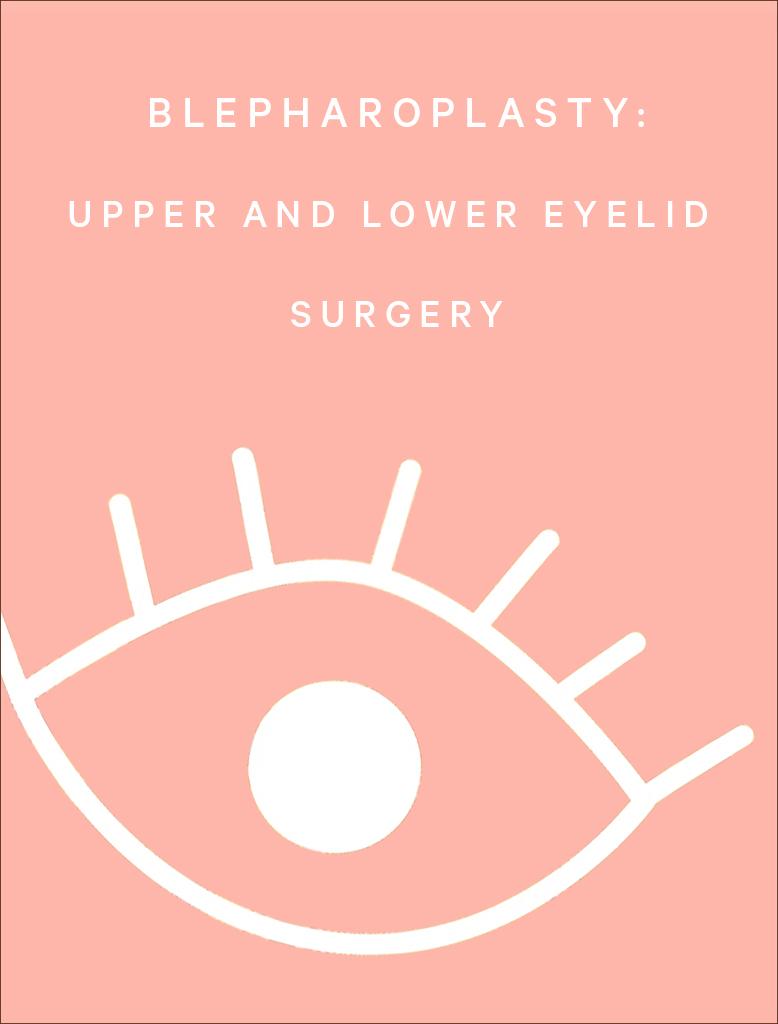
Blepharoplasty: Upper and lower eyelid surgery
Swelling, puffiness and increased wrinkles around the eyes can be signs of ageing or other medical problems. With the ageing process, the skin, muscle and fat of the eyelids can change to form ‘bags’ under the upper and lower eyelids as well as excess skin causing wrinkling. In severe cases, the excess skin can obstruct the vision and give the sensation of heaviness of the eyelids. Sometimes patients complain of extra skin draping over their eyelashes or difficulty reading.
Blepharoplasty
Eyelid surgery is called blepharoplasty and is one of the most commonly performed cosmetic procedures to help rejuvenate the face. Blepharoplasty can remove excess fat, muscle and or skin to create a more youthful look. Eyelid surgery is done to help restore the function of the eyelids and the aesthetic appearance of the eye region.
The upper and lower eyelids can be treated together or at separate times. The upper and lower eyelids can generally be operated on with the patient under local anaesthetic, which means that they are awake. However, many patients prefer local anaesthetic with sedation or general anaesthetic. The incisions for this procedure can vary. The upper eyelid blepharoplasty skin incision is found in the natural skin crease and is generally inconspicuous. Lower lid blepharoplasty can be done transconjunctivally if only lower eyelid fat is excised. This means the incisions are made from the internal surface of the eyelid called the conjunctiva and therefore no scars will be seen. If skin from the lower lid is removed as well, the incision is just below the lower lash line. Fat can also be removed or repositioned from this incision as well.
The procedure takes between 1-3 hours to complete depending on how many lids are operated on. Just after the procedure post operative instructions are given and the patient returns home. If stitches are used, they are removed 5-7 days after the procedure. Patients generally return to work one week after surgery. I recommend icing the eyes for 24 hours, sleeping on 2 pillows to decrease swelling, and then using warm compresses on the eyes 48 hours after surgery to help decrease swelling and bruising. Artificial tears and lubrication are used in the eyes and antibiotic ointment is placed on the skin incisions.
Serious complications are rare but may occur even in the hands of well-experienced and trained Oculoplastic Surgeons. Every effort is made to reduce the risk of complication and Oculoplastic Surgeons are trained to complications should they arise. Most commonly, there may be swelling, bruising and tenderness in the area. Dry eyes or watery eyes can be experienced from temporary incomplete closure of the eyelids. There is a very small risk of having excess scarring, asymmetry or lid malposition, like an outward turning eyelid when the lower eyelid is operated on. Sometimes malpositions are severe enough requiring repeat or corrective surgery. In extremely rare cases, blindness may occur if there is significant bleeding behind the eye.